See why top ecommerce brands use Miva’s no-code platform to run
multiple stores, manage massive catalogs, and grow their revenue.
Maintaining a robust client base is vital for sustained growth. For B2B merchants, this is even more significant, as customer relationships are such an important part of the sales process. Churn rate, or the rate at which you lose customers, is an important metric which measures the health of a business and is a strong predictor of revenue. To reduce B2B churn rate, businesses must continually optimize the overall experience for their clients—in this blog, we’ll explore how.
The first step in minimizing churn is building a deep understanding of your customers—knowing what drives them, what their pain points are, and what they value most in your service or product.
Understandably, much merchant emphasis is on business operations, products, and managing costs, but for B2B businesses (whose customers might be in completely different industries altogether), taking time to gain a comprehensive and empathetic view of the buying journey is very valuable. By performing market research and surveying customers directly, sellers can gain insights into behaviors and preferences which will guide a more tailored, personalized B2B shopping experience, hence reducing churn.
Customer service implemented thoughtfully on your website is an excellent opportunity to strengthen client relationships, and head off in advance any issues that might cause a customer to leave.
Fast response times: Every customer question needs to be acknowledged nearly instantly, either with direct answers, or an indicator of when detailed support will be available in the future.
Open communication: Getting in touch with a service rep should be easy, encouraged, and readily available across the ecommerce website.
Proactive communication: Reaching out to customers for a check-in regarding product performance or overall satisfaction can help them feel supported, and identify issues early.
Personalized customer support: Different customers might prefer different forms of support that are appropriate for them. So, during your research phase, it’s helpful to find out if customers prefer live phone calls, chat support, or are more inclined to DIY solutions—then you need to set about offering all of the above.
Training: Regularly train your team to address the specific customer service issues that individual clients or groups of clients are likely to need help with.
Every client and every industry has unique ways of doing business, and specific pain points they are trying to solve. Demonstrating flexibility and offering shopping experiences which are tailored to unique users or groups creates a more personalized solution for each buyer, which means a more effective solution. What can be personalized on an ecommerce site? Just about everything.
These types of features can be modified for individual accounts, or for groups of accounts/customer segments which share common attributes. The more personalized your website is for your visitors, the more relevant your solutions will be, contributing to lower churn.
Recognizing and rewarding loyalty is a great way to help clients see the benefits of maintaining their relationship with your business.
Develop programs that offer value-added benefits to your recurring clients, but not every customer will value the same type of reward. Think about what your customer values most, whether it’s discounting, exclusive access, or some other perk. Unique reward programs can be offered to different customer segments.
Creating a sense of community though loyalty programs is another way to lower the B2B churn rate, by showing your customers that you value their repeat business.
Reducing your B2B churn rate relies on understanding and then fulfilling client expectations. By investing time in gaining a deeper understanding of your clients, offering personalized customer service, tailoring your offerings to individual needs, and rewarding loyalty, you give your buyers every reason to stay invested in your brand.

Katy Ellquist, Miva’s Digital Marketing Strategist, is an accomplished writer, marketer, and social media analyst who has created sophisticated content campaigns for a broad range of professional clients. She brings to Miva a complex understanding of ecommerce trends and techniques, building upon extensive digital agency experience and a prior role as direct liaison to Miva’s top accounts. Katy is a regular contributor to the Miva blog, covering essential ecommerce topics like design & development strategy, site optimization, and omnichannel selling, with the goal of increasing the actionable knowledgebase of the entire Miva community.
Love it? Share it!
No worries, download the PDF version now and enjoy your reading later...
Download PDF